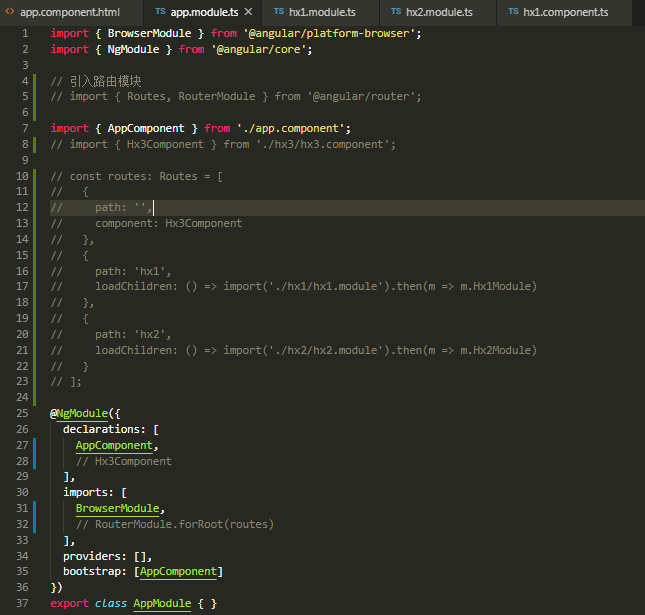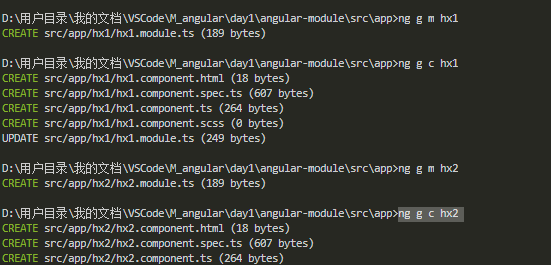Angular:惰性加载的模块
①通过ng new angular-module创建一个全新的angular应用,默认不选路由

②通过一下命令分别创建2个模块和1个组件
ng g m hx1
ng g c hx1
ng g m hx2
ng g c hx2
ng g c hx3

创建完成目录如下

③将app.module和app.component改造
app.module如下:
import { BrowserModule } from '@angular/platform-browser';
import { NgModule } from '@angular/core';
// 引入路由模块
import { Routes, RouterModule } from '@angular/router';
import { AppComponent } from './app.component';
import { Hx3Component } from './hx3/hx3.component';
const routes: Routes = [
{
path: '',
component: Hx3Component
},
{
path: 'hx1',
loadChildren: () => import('./hx1/hx1.module').then(m => m.Hx1Module)
},
{
path: 'hx2',
loadChildren: () => import('./hx2/hx2.module').then(m => m.Hx2Module)
}
];
@NgModule({
declarations: [
AppComponent,
Hx3Component
],
imports: [
BrowserModule,
RouterModule.forRoot(routes)
],
providers: [],
bootstrap: [AppComponent]
})
export class AppModule { }
app.component如下:
<router-outlet></router-outlet>
④将hx1.module改造,hx2.module与之类似
import { NgModule } from '@angular/core';
import { CommonModule } from '@angular/common';
import { Hx1Component } from './hx1.component';
// 引入路由模块
import { Routes, RouterModule } from '@angular/router';
const routes: Routes = [
{
path: '',
component: Hx1Component
},
];
@NgModule({
declarations: [Hx1Component],
imports: [
CommonModule,
RouterModule.forChild(routes)
]
})
export class Hx1Module { }
⑤页面效果






 浙公网安备 33010602011771号
浙公网安备 33010602011771号